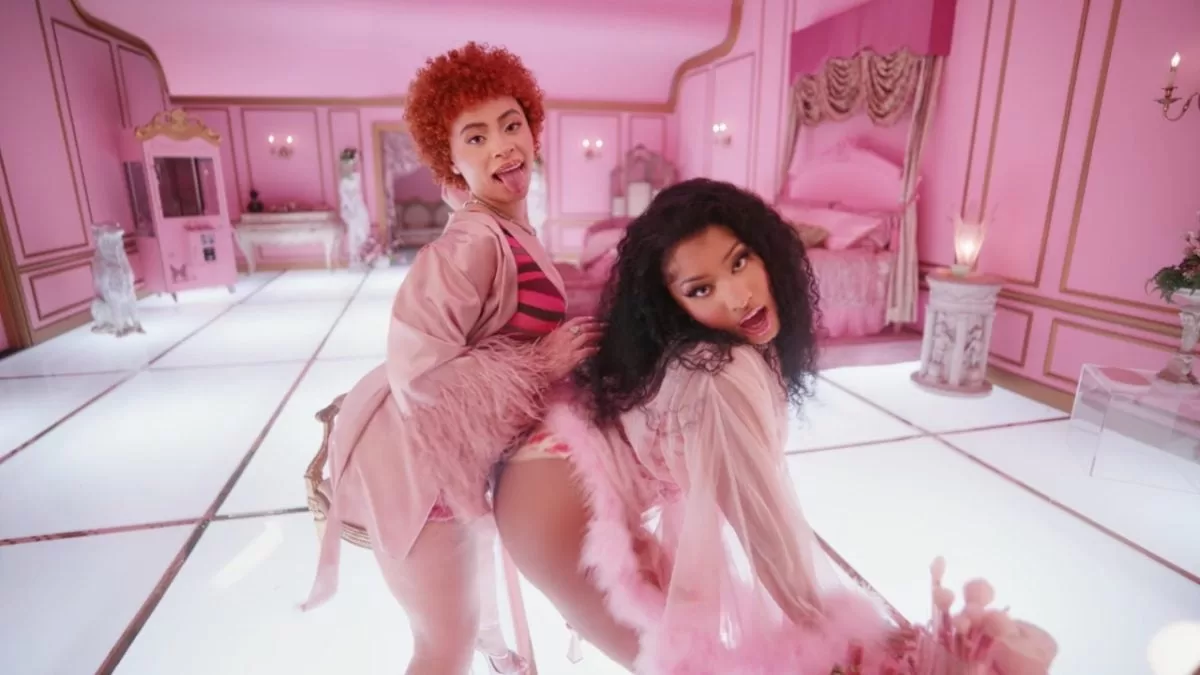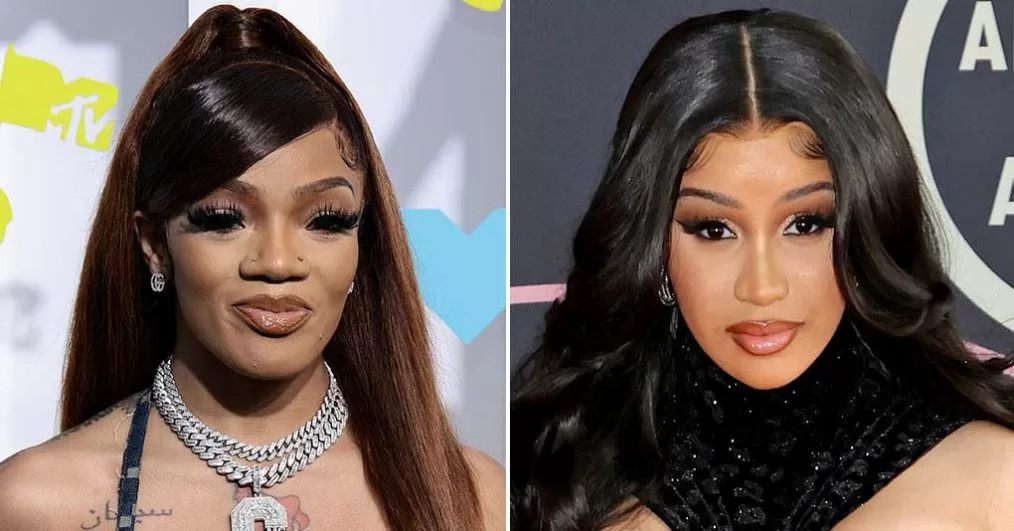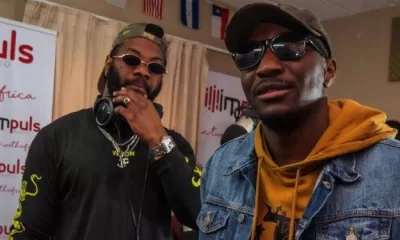Editorial
The Urban Canvas: Street Culture’s Impact on Italian Hip Hop Identity

Hip hop, a genre born in the streets of New York City, has transcended borders and found its place as a global phenomenon. Italy, with its rich cultural heritage, has embraced hip hop and infused it with its own unique flair. Italian hip hop, influenced by the energy and vibrancy of street culture, has become a powerful vehicle for artistic expression and social commentary. This article explores the strong connection between Italian hip hop and street culture, highlighting how elements such as streetwear, graffiti, street art, and street battles have shaped and defined the genre’s identity.
Streetwear and Fashion: Where Style Meets Substance
In Italian hip hop culture, fashion is more than just a trend – it’s a statement. Streetwear has become the signature style associated with the genre, reflecting the influence of urban aesthetics and individual expression. Iconic fashion brands such as Fila, Kappa, and Stone Island have seamlessly merged with Italian hip hop, becoming symbols of authenticity and street credibility. Italian hip hop artists incorporate fashion as a form of self-expression, using clothing as a canvas to showcase their identity, beliefs, and attitude. Whether it’s oversized hoodies, baggy jeans, or fresh sneakers, fashion in Italian hip hop is a visual representation of the genre’s urban roots.
The fusion of Italian hip hop and streetwear has created a unique fashion subculture. It has blurred the lines between music and style, with artists not only creating music but also becoming fashion influencers. They shape trends, collaborate with designers, and even launch their own clothing lines. Fashion becomes an extension of their artistic expression, adding depth and visual impact to their music and performances.
Graffiti and Street Art: Colors and Messages on Urban Canvases
Graffiti and street art have played a significant role in the Italian hip hop movement, serving as powerful forms of visual expression and platforms for social and political messages. From the vibrant murals adorning city walls to the intricate tags and throw-ups, graffiti has become an integral part of the Italian hip hop scene. Notable Italian hip hop artists like Jesto, Nesli, and Emis Killa have roots in street art, channeling their creativity onto various surfaces. Graffiti becomes a means of conveying emotions, opinions, and social issues, transforming the streets into galleries of artistic resistance and storytelling.
The art of graffiti carries a rebellious spirit, challenging societal norms and pushing boundaries. It provides a voice to the voiceless, amplifying their messages and sparking conversations. In Italian hip hop, graffiti serves as a visual language, adding layers of meaning to the music. It creates a symbiotic relationship between the auditory and the visual, enhancing the impact of the genre and creating a dynamic artistic experience for the audience.
Street Culture as Inspiration: From the Pavement to the Lyrics
Street culture serves as a wellspring of inspiration for Italian hip hop artists, providing them with a rich tapestry of themes and experiences to explore in their music. Italian hip hop lyrics often delve into the realities of urban life, shedding light on the struggles, dreams, and aspirations of those living in Italian cities. The themes of resilience, social inequality, and personal growth resonate strongly within the genre. Specific songs and albums, such as Fabri Fibra’s “Tradimento” and Ghali’s “Album,” exemplify the fusion of street culture and Italian hip hop, capturing the essence of the streets with raw authenticity and poetic storytelling.
Italian hip hop artists draw from their own experiences and observations, creating narratives that reflect the diverse facets of street culture. They give a voice to the marginalized, addressing social issues such as poverty, racism, and the challenges faced by urban communities. The lyrics become a form of social commentary, highlighting the realities of life while offering hope and inspiration. Through their music, Italian hip hop artists strive to make a positive impact and effect change within their society.
Street Battles and Competitions: Showcasing Talent and Fostering Community
Street battles and competitions have become integral components of the Italian hip hop scene, providing a platform for artists to showcase their talent, refine their skills, and build a sense of community. These events bring together rappers, breakdancers, graffiti artists, and DJs, creating a melting pot of artistic expression. Notable Italian hip hop battles like “OneMic” and “Milionarios del Rap” have propelled emerging artists into the spotlight, igniting their careers and shaping the future of the genre. Street battles foster healthy competition, inspire artistic growth, and serve as a testament to the vibrant energy and talent within the Italian hip hop community.
Street battles showcase the technical prowess, lyrical dexterity, and stage presence of artists. They are not just about winning but also about connecting with the audience, leaving a lasting impression, and building a reputation within the hip hop community. These battles become the breeding ground for talent, allowing artists to hone their skills, learn from their peers, and push the boundaries of their craft. Moreover, street battles foster a sense of camaraderie and unity among artists, creating a supportive network that strengthens the Italian hip hop community as a whole.
The fusion of Italian hip hop and street culture has created a dynamic and impactful artistic expression. Streetwear and fashion serve as a visual representation of the genre’s identity, while graffiti and street art become the colors and messages that adorn the urban landscape. Street culture inspires Italian hip hop artists, giving voice to the struggles and triumphs of urban life. Street battles and competitions showcase talent, foster community, and drive artistic growth. The strong connection between Italian hip hop and street culture has shaped the genre’s identity, allowing it to resonate with audiences far and wide.
As the genre continues to evolve, Italian hip hop‘s influence on street culture shows no signs of slowing down. It serves as a reflection of the times, a mirror that captures the spirit and experiences of a generation. Italian hip hop‘s future prospects are bright, with new artists emerging, pushing boundaries, and amplifying diverse voices. As the streets continue to inspire, Italian hip hop will remain a powerful force, shaping the artistic expression of a dynamic and ever-evolving culture.
List of Top Italian Hip Hop songs
- “Mentalité” by Baby Gang
- “COME VUOI” by Geolier
- “Kirikù” by AxOsa
- “BOSS” by Tony Effe
- “Non lo sai” by Shiva
- “Secrets” by Paul Damixie
- “Pelé” by Rhove
- “Arai” by Medy ft. Capo Plaza
- “Tirana” by Paky ft. Finem
- “YAMAMAY” by Niky Savage
- “Capri Sun” by Capo Plaza
Top Italian Hip Hop Artistes
1. J-Ax:
– “Maria Salvador”
– “Vorrei ma non posto”
– “Uno di quei giorni”
– “Deca Dance”
– “Ostia Lido”
2. Fabri Fibra:
– “Pamplona”
– “Tranne te”
– “Fenomeno”
– “Alieno”
– “L’italiano balla”
3. Caparezza:
– “Vieni a ballare in Puglia”
– “Fuori dal tunnel”
– “La ghigliottina”
– “La legge dell’ortica”
– “Goodbye Malinconia”
4. Marracash:
– “Senza un posto nel mondo”
– “Brivido”
– “Niente canzoni d’amore”
– “Badabum cha cha”
– “Status”
5. Ghali:
– “Cara Italia”
– “Happy Days”
– “Habibi”
– “I Love You”
– “Zombie”
6. Salmo:
– “Playground”
– “Estate dimmerda”
– “90MIN”
– “Il cielo nella stanza”
– “Don Medellín”
7. Fedez:
– “21 grammi”
– “Cigno nero”
– “Prima di ogni cosa”
– “Magnifico”
– “Bella storia”
8. Emis Killa:
– “Maracanã”
– “Mercurio”
– “Supereroe”
– “Parole di ghiaccio”
– “Wow”
9. Clementino:
– “O’ viento”
– “Mea culpa”
– “Quando sono lontano”
– “Chi vuole essere milionario?”
– “Fumo”
10. Rocco Hunt:
– “Nu juorno buono”
– “Vene e vvà”
– “Io posso”
– “Sto bene così”
– “Se mi chiami”
In conclusion, the fusion of Italian hip hop and street culture has birthed an art form that transcends music. It is a testament to the power of the streets, the creativity of the artists, and the resilience of communities. Italian hip hop stands as a vibrant and authentic voice, weaving together streetwear, graffiti, street art, and street battles into a tapestry of artistic expression that resonates with audiences worldwide.








































